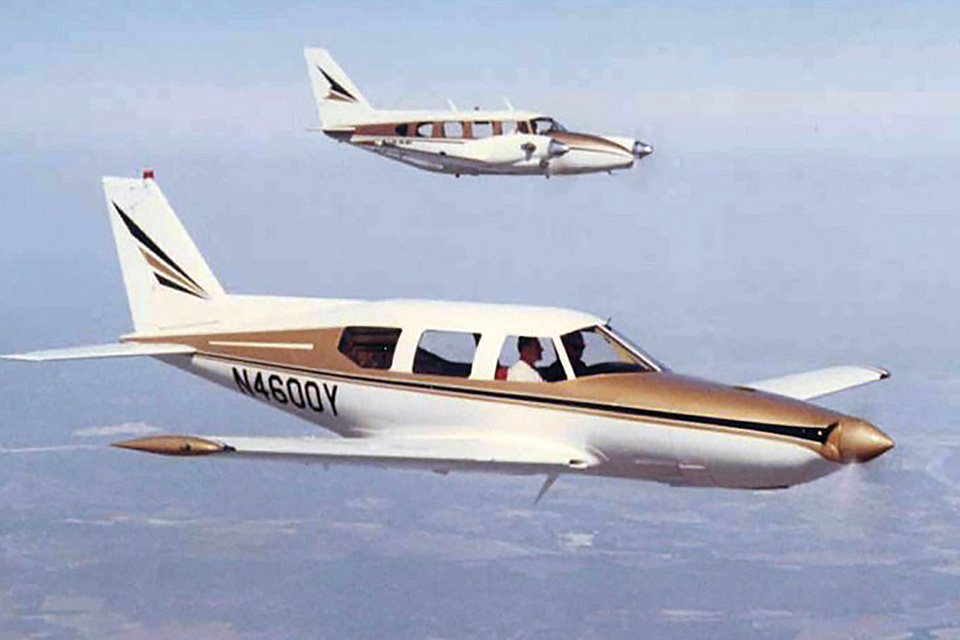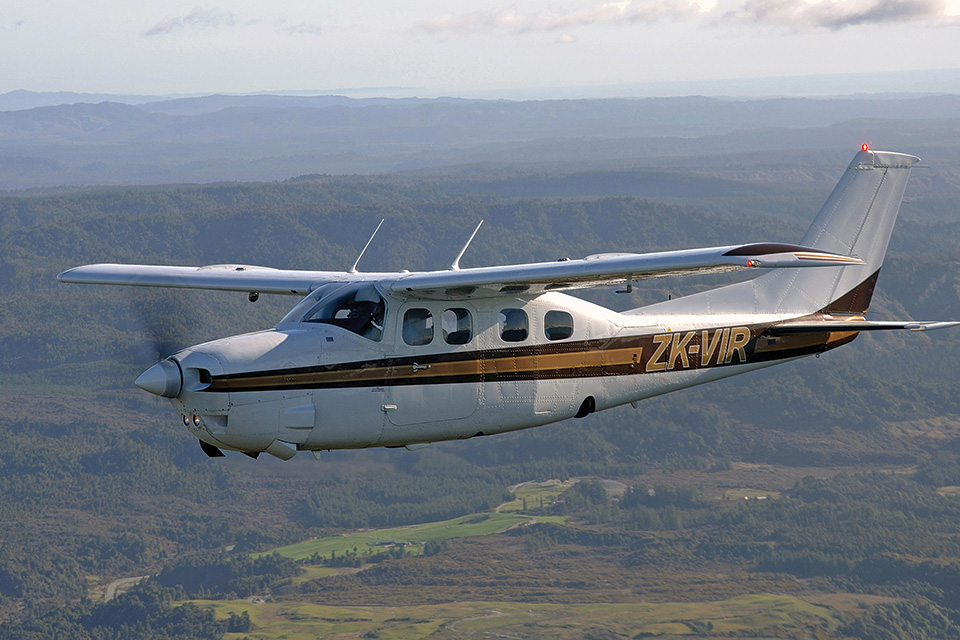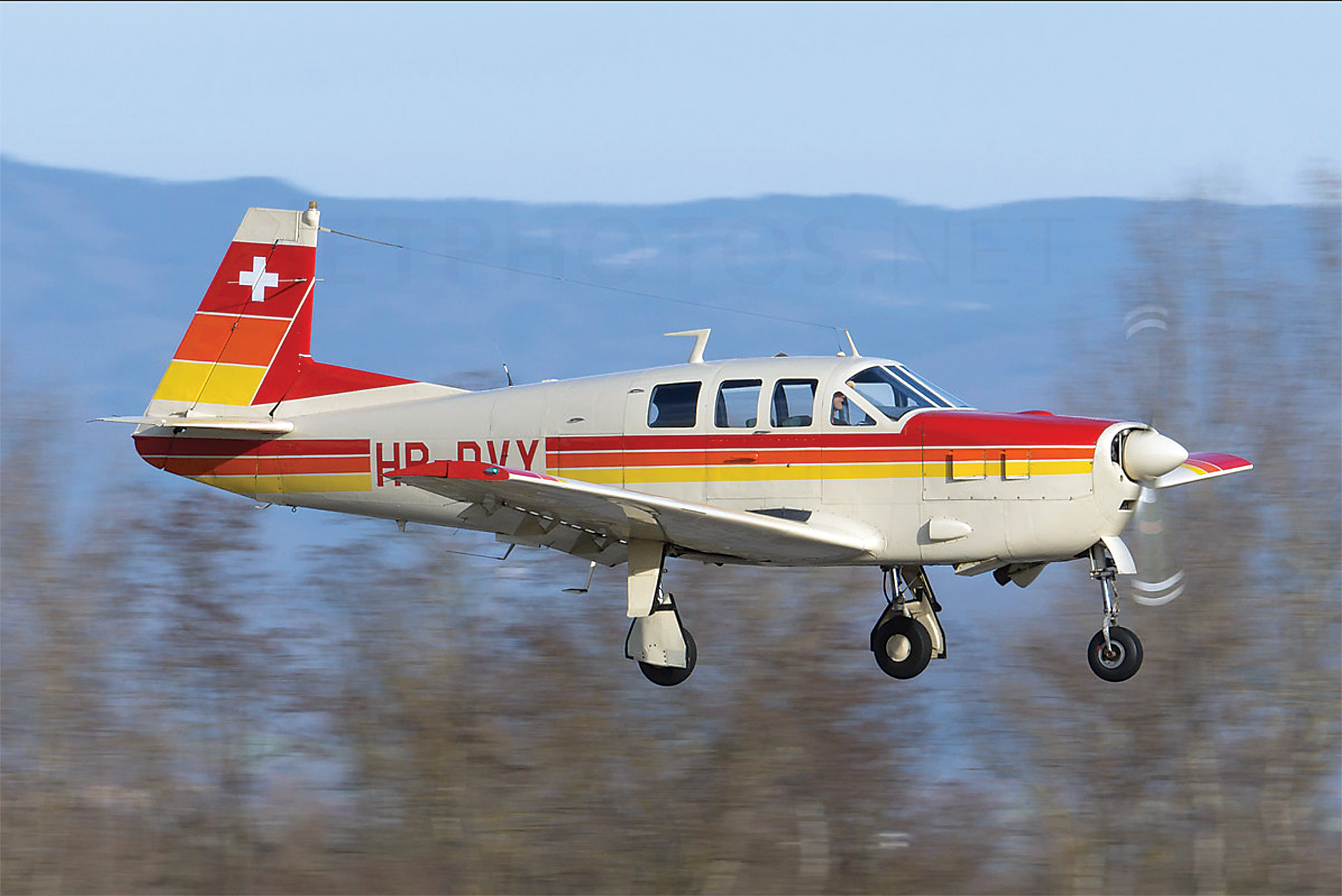The effort to develop a pressurized lightplane for private pilots deflated when it became clear the market for such aircraft was nearly nonexistent.
The mid-1960s ushered in a brief golden age for private flying. You couldn’t go to a backyard barbecue without running into somebody who was taking flying lessons or already had a private pilot’s license. Factories in Wichita, Kan., and Lock Haven, Pa., were turning out Cessnas, Beeches and Pipers at a rate that would peak a decade later at nearly 18,000 units for the year. Small beer for Detroit but big numbers for very specialized, handmade, expensive machines.
Tailwheels were becoming as rare as stick shifts are today, and Cessna promoted its new tricycle-gear singles as though they were cars—Land-O-Matics, the ads called them. Twin-engine personal aircraft were becoming common, and for high rollers there was a new category called bizjets. Airlines had already switched to pressurized jets that could fly above the weather.
So why not pressurize the little guy too? Just seal all the air leaks in a lightplane’s cabin and let the engine drive an air compressor, as well as the propeller, to pump up the cabin. Private pilots and their passengers could then cruise at unimagined flight levels in comfort and safety.
Easy for me to say.
Easy for the Texas-based Mooney Aircraft Company to say as well, at least initially.
Mooney wasn’t one of the Big Three. It was stayin’ alive by manufacturing not another aerial sedan but a flying Porsche—a fast, snug-cabined, distinctive-looking low-wing retractable speedster called the M20. It sold in the hundreds per year, not thousands. Mooney decided to turn up the volume and create a brand-new kind of private plane: a pressurized single. The Mooney M22 Mustang first flew in 1964 and was certified by the FAA two years later, making it the world’s only civil production pressurized single-engine aircraft, a distinction it would retain for more than a decade.
The little M20’s cabin was built around a strong, light, steel-tube structure much like a racecar’s roll cage. Rather than design an all-new fuselage and thus give up the distinctive look of the familiar M20, Mooney retained the cage and created a reasonably airtight pressure vessel around it, thanks to the use of many pounds of special sealant. The result was an airplane that looked like an armored car with wings.
Unfortunately, some say it also flew like one. The five-seat M22 Mustang was heavier than unpressurized Piper, Cessna and Beech six-seaters, and its performance suffered. Climbing to an altitude where the pressurization became useful took forever. Cruising at 24,000 feet, the M22 provided a cabin pressure equivalent to 11,000 feet, but on a typical general-aviation trip that altitude could only be utilized for 20 minutes or less before it was time to head back down. Time saved was minimal, operating cost dollars burned were maximal.
The M22 had a Lycoming TIO-541-A1A engine with a special low-profile oil sump to provide clearance for the retracted nosewheel. Few of the engines were ever manufactured since the M22 was the only airplane that used it. Time before overhaul was a low 1,300 hours, and the engine proved to be troublesome and touchy to operate. Nor did the M22 have an FAA-certified autopilot or a de-icing system—both considered necessary for all-weather flight. Replacement parts for repairs were either expensive or nonexistent.
One Mustang briefly made headlines, if only in the aviation press. In June 1967 it flew from New York to the Paris Air Show nonstop in 13 hours and 10 minutes, thanks to an extra fuel tank in the cabin.
Few M22s were ever manufactured. Some sources say 36 were sold, though others give numbers as low as the mid-20s. At the time, new M22s cost about a third more than competitive unpressurized singles such as the Piper Comanche and Beech Bonanza—about $420,000 in today’s dollars. The airplane was a financial disaster, each unit selling at a loss, and the M22 contributed substantially to Mooney’s bankruptcy in 1969. Fifteen M22s are still registered in the U.S., with several more overseas, but only a handful are flying.
Was there actually a market for pressurized singles, or did it exist only in Mooney’s dreams? I owned a high-performance unpressurized single and routinely cruised it as high as 21,000 feet, breathing oxygen through a mask. It was a bit inconvenient, but my portable O2 system cost just a few hundred dollars. Would I have paid $100,000 more for mask-free convenience? No way, but a small audience of pilots who could easily afford it might have.
Piper apparently thought so, for in 1967 the company had its go-to guy for special projects, noted engineer Ed Swearingen, create a pressurized Piper Comanche prototype. Having seen Mooney’s M22 kludge, Swearingen designed a handsome, cylindrical, all-new pressurized cabin and fuselage with twin gullwing doors. Powered by a 350-hp Lycoming IO-540, the PA-33 Comanche briefly showed promise but lived for only two months.

In April 1967 a Lycoming factory pilot lost control of the prototype while taking off from Lock Haven and totaled the airplane as well as two brand-new Aztec twins awaiting delivery. Piper, doubtless aware that Mooney’s contender was going nowhere, canceled the project.
It remained for Cessna to manufacture the first viable pressurized single, the P210 Pressurized Centurion, introduced in 1978. The company built nearly 900 of them before discontinuing production in 1986. Today, several multimillion-dollar pressurized singles with turboprop engines are being manufactured—the Piper Meridian series and the French Daher TBM line.

The M in TBM stands for Mooney, for that airplane grew from a joint venture between Mooney and a group of French entrepreneurs. In the mid-1980s, the plucky Kerrville company had prototyped an entirely new high-altitude single that it called the 301, a nod to its intended top speed in mph. Mooney’s M22 Mustang was a disappointment in the 1960s, but ultimately the company contributed in important ways to a successful 21st-century pressurized single.
This article originally appeared in the July 2020 issue of Aviation History. Don’t miss an issue. To subscribe, click here!





